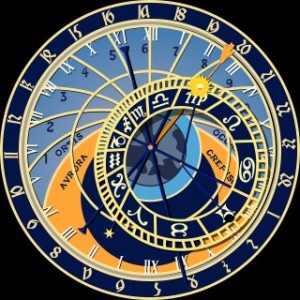About this article ?
This highly interesting article about the d60 chart or shashtiamsha horoscope talks in-depth about the d60 divisions.
also how does d60 or shashtiamsha connect with other mundane aspects of family, life, children ,money and job etc.
It tells you how to do the calculations for the d60 or shashtiamsha chart or horoscope.
The Full details of each of the 60 shashtiamsha or d60 divisions are given for your kind reference .
So also evaluated how how d60 or shashtiamsha connects to past life incarnation.
Later it discusses real life application of the d60 or the shashtiamsha chart to With examples of Salman Khan, Rahul Gandhi ji, Donald Trump, and Narendra Modi ji for illustration
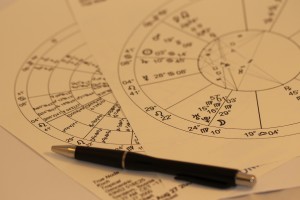
What are other uses of d60 or shashtiamsha divisional chart ?
so good Yoga’s formed in the d60 charts suggest good karma done in the past life incarnation and likewise the opposite.
the bad Yoga’s give miseries of all kinds and good Yoga’s the blessings
so any basic thinking applied for d1 chart or the moon chart could be applied for the Shashtiamsha or d60 chart or horoscope.
Like be it transit, dasha or Yoga’s.
so also if the malefic house lord are strong or exalted, so as d60= past life good karma, so means one wastes good karma of past in incorrect options in this life time.
So the malefic houses are 3( secondary markesh), 6( opposition and enmity and legal matters) , 8th bhava( unexpected obstacles, issues ) and the 12th house of waste and confinement or health issues.
as the sign is divided into 60 divisions for the Shashtiamsha or d60 chart or horoscope. All divisions have various deities that define the nature of the division.
so if planets are great in placement but with a malefic deity in the Shashtiamsha or d60 chart or horoscope, the results are mixed in nature.
also the classics give various kinds of roles or job for each of the 60 divisions.
so professions and life styles of the past life could be easily found based on the d60 chart or Shashtiamsha or horoscope.

How to Calculate the Shastiamsa Divisional Horoscope ? What are the ruling deities of Various Divisions ?
The Shastiamsha (that’s 1/60th part of a sign , or half a degree each = 0.5 x60=30 degrees).That is the 60th divisional chart(D-60).
To calculate the Shastiamsa Lord ignore the sign position of a planet and take the degrees etc. it has traversed in that sign . Multiply that figure by 2 and divide the degrees by 12. .
Add 1 to the remainder, which will indicate the sign , in which the shastiamsa falls. The Lord of that sign is the planet that rules, that’s 60th harmonic.
For odd signs the names of Shastiamsha divisions:
1. Ghora
2. Rakshasa
3. Deva
4. Kuber
5. Yaksh
6. Kindar
7. Bhrasht
8. Kulaghna
9. Garal
10. Vahni
11. Maya
12. Purishak
13. Apampathi
14. Marutwan
15. Kaal
16. Sarpa
17. Amrit
18. Indu
19. Mridu
20. Komal
21. Heramba
22. Brahma
23. Vishnu
24. Maheshwara
25. Deva
26. Ardr
27. Kalinas
28. Kshitees
29. Kamalakar
30. Gulik
31. Mrityu
32. Kaal
33. Davagni
34. Ghora
35. Yama
36 Kantak
37. Suddh
38. Amrit
39. PurnaCandr
40. Vishadagdha
41. Kulanas
42. Vamshakshaya
43. Utpat
44. Kaal
45. Saumya
46. Komal
47. Sheetal
48.
Karaladamshtr
49. Chandramukhi
50. Praveen
51. Kaalpavak
52. Dhannayudh
53. Nirmal
54. Saumya
55. Krur
56. Atisheetal
57. Amrit
58. Payodhi
59. Brahman
60. CandraRekha (InduRekha).
The reverse is the order for even signs (starting from Chandra Rekha, Brahman etc).
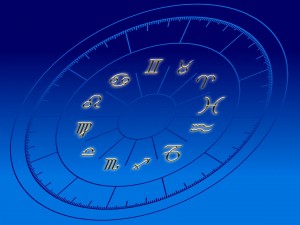
A few more interpretations of d60 or shashtiamsha with planetary energies associated with each d60 or Shashtiamsha
The below sections give more descriptions of various divisions of d60, named differently as well but referring to the same set of energies.
Like Ketu the first one is ruled by number 7 or ketu energies. helping in sadhana and spiritual practices.
1) 0°-1° 00′ – Ghora division:
The 1st division of Shashtiamsha, from 0° to 1° 00′, is associated with Ghora, the South Node of the Moon.
This division symbolizes spiritual detachment, past karma, and the quest for inner enlightenment.
Planets placed in this division suggest that the native may experience a strong pull towards spiritual or philosophical pursuits.
This placement often indicates a life journey focused on overcoming material attachments and seeking higher truths.
The native may find themselves drawn to meditation, introspection, or mystical practices, aiming to understand deeper layers of existence.
However, this division also poses challenges related to balancing spiritual pursuits with practical responsibilities.
The native might struggle with feelings of disconnection from the material world or difficulty in integrating spiritual insights into everyday life.
Embracing a harmonious blend of spiritual wisdom and practical action can help the native achieve a fulfilling and grounded life.
By addressing the tension between spiritual aspirations and material needs, the native can create a balanced approach to living.
2 1° 00′ – 2° 00′ – Rakshasa:
The 2nd division of Shashtiamsha, covering from 1° to 2° 00′, is linked with Rakshasa, the demon .
This division signifies intense transformation and the dismantling of old structures or patterns. This could be high or intense energy of Saturn or shani dev and an aggressive rahu could also account for this divisions.
Planets in this division suggest that the native may encounter profound changes or crises that challenge existing norms and lead to personal growth.
This placement often involves confronting deep-seated issues and undergoing significant inner and outer transformations.
The challenge associated with this division lies in managing the upheavals that come with intense transformation.
The native might face situations that feel destabilizing but are essential for clearing outdated patterns and making room for new opportunities.
Embracing change as a catalyst for growth and renewal, rather than resisting it, can help the native navigate these transformations with resilience and strength.
By accepting the process of dismantling the old, the native can build a more aligned and fulfilling life.
3. 2° 00′ – 3° 00′ -Deva:
The 3rd division of Shashtiamsha, from 2° to 3° 00′, is associated with Deva , the concept of divinity.
This division highlights the divine nature of life and the importance of managing time effectively.
Planets in this division suggest that the native may have a heightened awareness of devta or divine being and its impact on their life.
This placement often brings experiences related to timing, planning, and the need to align actions with the natural rhythms of life.
Navigating the challenges of time management and recognizing the right entities for action can be crucial for this placement.
The native might face situations where they need to balance good motivations with proactive efforts.
By developing a sense of timing and working in harmony with life’s cycles, the native can achieve success and fulfillment.
Integrating effective time management skills with an understanding of life’s rhythms can lead to a well-rounded and prosperous life.
4. 3° 00′ – 4° 00′ – Kuber:
The 4th division of Shashtiamsha, spanning from 3° to 4° 00′, is associated with kuber , the pursuit of desires for money . wealth and related pleasure is well represented by mars and venus energies combined.
Planets in this division suggest that the native has strong drives and ambitions related to material, spiritual goals.
1. Nature and Influence:
The Kuber division is directly associated with wealth, prosperity, abundance, and material success.
Just as Lord Kubera is revered as the guardian of wealth, this division is believed to bestow financial abundance and material comforts on the native.
Planets placed in this division are said to have a favorable impact on the individual’s financial status, bringing opportunities for wealth generation, financial stability, and material gains.
Individuals with key planets or the Ascendant in the Kuber division might naturally attract wealth and success in financial matters.
This placement suggests a potential for prosperity through one’s own efforts, investments, or through fortunate circumstances.
There may be a heightened sense of business acumen, a knack for making profitable decisions, or a tendency to accumulate wealth over time.
2. Practical Implications:
Financial Success:
The Kuber division is highly auspicious when it comes to matters of finance and wealth.
Those with significant planetary influence in this division may experience ease in acquiring wealth, successful business ventures, and the ability to manage and grow their assets effectively.
This can manifest as success in entrepreneurship, investments, or careers related to finance, real estate, or luxury goods.
Material Comforts: Beyond just financial wealth, the Kuber division also signifies material comforts and luxuries.
Individuals influenced by this division may enjoy a life filled with material abundance, comfort, and the ability to indulge in the finer things in life.
This could include ownership of property, expensive possessions, and a generally comfortable lifestyle.
Generosity and Charity: While Kuber is associated with wealth, it’s also important to remember that Lord Kubera is a protector and distributor of wealth.
Thus, this division can also signify a tendency towards generosity, charitable acts, and the responsible use of wealth.
Those with a strong Kuber influence may feel a sense of duty to use their financial resources for the greater good, engaging in philanthropy or supporting causes that benefit society.
3.Balancing Kuber’s Energies:
Avoiding Materialism:
While the Kuber division can bring financial prosperity, it’s crucial to maintain a balanced perspective towards wealth.
The native should be mindful not to become overly attached to material possessions or let the pursuit of wealth overshadow other important aspects of life, such as relationships, spiritual growth, or personal fulfillment.
Financial Wisdom: The Kuber division encourages not just the accumulation of wealth but also the wise management and distribution of it.
Engaging in sound financial planning, prudent investments, and ensuring a balance between earning and spending is essential to fully harness the positive influence of this division.
Spiritual Perspective: To balance the material focus, the native can benefit from cultivating a spiritual perspective on wealth.
Recognizing that wealth is a means to an end, rather than an end in itself, can help the individual use their financial resources in ways that contribute to both personal satisfaction and the well-being of others.
In summary, the Kuber division in the D60 chart represents wealth, prosperity, and material success, offering the potential for financial abundance and a comfortable lifestyle.
By balancing the pursuit of material wealth with generosity, wisdom, and a broader perspective, individuals influenced by this division can lead a prosperous and fulfilling life.
5. 4° 00′ – 5° 00′ – Yaksh celestial being :
The 5th division of Shashtiamsha, from 4° to 5° 00′, is linked with Yaksh, representing celestial beings .
Planets in this division suggest that the native could get success by Yaksh.
is named after the Yakshas, mythical beings in Hindu and Buddhist traditions who are often depicted as guardians of treasures and natural wealth.
This division is associated with mysterious, hidden, or guarded aspects of life.
Planets placed in the Yaksh division can indicate a life where certain resources or talents may be concealed, requiring effort to uncover and utilize fully.
Individuals with significant planetary influences in this division may experience a deep connection with hidden knowledge, wealth, or spiritual insights that are not immediately apparent.
This placement might also suggest a need to protect one’s resources or navigate through life’s mysteries with caution and wisdom.
It highlights the importance of unlocking potential and recognizing the value of what is not immediately visible, whether in material, intellectual, or spiritual realms.
6. 5° 00′ – 6° 00′ – Kindar or kinnar division:
The 6th division of Shashtiamsha, The Kinnar division in the D60 (Shashtiamsha) chart is named after the Kinnars, celestial beings in Hindu and Buddhist mythology who are often depicted as part-human and part-horse or bird. They are known for their musical talents and are considered symbols of ambiguity and duality. In the context of the D60 chart, planets placed in the Kinnar division suggest themes of duality, fluidity, and the blending of contrasting elements in life.
Individuals with key planets in the Kinnar division may experience a life marked by complexity and the need to reconcile opposing forces or navigate between different identities, roles, or situations. This division can also indicate a talent for the arts, particularly music or dance, and a unique, unconventional approach to life. There may be an innate understanding of the nuanced, multifaceted nature of existence, and the native might possess the ability to adapt and thrive in diverse or shifting circumstances. The Kinnar division invites exploration of one’s inner diversity and the embracing of a holistic, integrative approach to life.
7. 6° 00′ – 7° 00′ – Bhrasht or corrupt:
The 7th division of Shashtiamsha, from 6° to 7° 00′.
with the concept of “fall” or “disgrace.
” The term “Bhrasht” implies something that is corrupted, fallen, or deviated from its ideal state.
Planets placed in this division are often interpreted as carrying challenging karmic influences, potentially leading to situations of moral or ethical dilemmas, loss of reputation, or experiences of downfall in some aspect of life.
Individuals with significant planets in the Bhrasht division may face tests related to integrity, ethics, and the consequences of their actions.
This division suggests a life where one must be vigilant about maintaining moral standards and making choices that align with higher principles.
The challenges presented by the Bhrasht division are not insurmountable but require conscious effort to rise above temptations, avoid pitfalls, and redeem oneself through righteous actions.
It is a placement that emphasizes learning from mistakes, rebuilding after setbacks, and striving for personal and spiritual growth despite adversities.
<
8. 7° 00′ – 8° 00′ – Kulaghna:
The 8th division of Shashtiamsha, spanning from 7° to 8° 00′.
The term “Kulaghna” suggests influences that might disrupt or challenge familial harmony, traditions, or the continuity of one’s lineage.
Planets positioned in this division could indicate karmic challenges related to family dynamics, inheritance, or issues within the ancestral line that need to be addressed or healed.
Individuals with significant planets in the Kulaghna division may face obstacles related to family responsibilities, ancestral burdens, or conflicts within the family structure.
This placement could also suggest a break from traditional paths or a need to confront and resolve long-standing family issues.
While the Kulaghna division may bring difficulties, it also presents an opportunity for transformation and healing within the family context, urging the individual to mend rifts, restore harmony, and create a positive legacy for future generations.
9. 8° 00′ – 9° 00′ – Garal:
The 9th division of Shashtiamsha, from 8° to 9° 00′.
Is associated with the concept of “poison” or “toxicity.
” The word “Garal” means poison in Sanskrit, symbolizing challenges, difficulties, or toxic influences that one might encounter in life.
Planets placed in this division can indicate the presence of karmic burdens or situations that are particularly challenging, potentially involving deceit, bitterness, or harmful circumstances.
Individuals with significant planets in the Garal division may face experiences that require them to navigate through complex or toxic situations, often leading to personal growth through adversity.
This division may also suggest that the person needs to be cautious about their environment, relationships, or decisions to avoid negative outcomes.
However, just as poison can also be transformed into medicine, the challenges presented by the Garal division can lead to profound healing, resilience, and the ability to turn difficult situations into opportunities for growth and transformation.
10.9° 00′ – 10° 00′ – Vahni or agni division :
The 10th division of Shashtiamsha, spanning from 9° to 10° 00′, is associated with fire.
is associated with the element of fire, symbolizing intensity, purification, and transformation.
The word “Agni” means fire in Sanskrit, and this division is linked to the powerful, transformative qualities of fire—both its ability to destroy and its capacity to purify.
Planets placed in the Agni division may indicate a life marked by intense experiences, passion, and the need for transformation.
Individuals with key planets in this division might encounter situations that challenge them to undergo significant personal growth, often through trials that “burn away” impurities or outdated aspects of their lives.
This division suggests a strong drive for change, the ability to overcome obstacles through sheer willpower, and a deep inner strength.
While the Agni division can bring intense challenges, it also offers the opportunity for profound personal evolution, leading to a purified, more authentic self.
11. 10° 00′ – 11° 00′ -Maya:
The 11th division of Shashtiamsha, from 10° to 11° 00′, is linked with maya the element of delusion.
with the concept of illusion, deception, and the illusory nature of reality.
“Maya” in Sanskrit refers to the cosmic illusion that veils the true nature of existence, often leading individuals to perceive and interact with the world in a way that is not entirely aligned with ultimate truth.
Planets placed in the Maya division may influence an individual’s life by introducing situations where things are not as they seem.
This could manifest as misunderstandings, deceptions, or experiences where reality is obscured, leading the individual to confront the difference between appearance and truth.
Those with significant planetary placements in this division might need to navigate through layers of illusion to uncover deeper truths, both in their external circumstances and within themselves.
The Maya division challenges one to discern the real from the unreal and encourages spiritual growth by learning to see beyond superficial appearances and understanding the deeper, often hidden, aspects of life.
12.11° 00′ – 12° 00′ – Purishak:
The 12th division of Shashtiamsha, spanning from 11° to 12° 00′, is associated with destroyer of old forms .
is associated with the concept of “vitality” or “life force.
” The term “Purishak” can be interpreted as relating to strength and energy that sustains life, reflecting the importance of health, vigor, and sustenance.
Planets positioned in the Purishak division may emphasize issues related to physical health, vitality, and the overall well-being of the individual.
This division highlights the significance of maintaining good health and harnessing one’s energy effectively.
Individuals with significant planetary placements in this division might experience a focus on their physical condition, need to manage their vitality, or face challenges related to health.
However, it also provides an opportunity to cultivate a strong life force, ensuring that one’s energy is directed towards productive and fulfilling pursuits.
The Purishak division underlines the importance of vitality and the role it plays in achieving success and balance in various aspects of life.
13. 12° 00′ – 13° 00′ – Apampathi:
The 13th division of Shashtiamsha, spanning from 12° to 13° 00′, is associated with annihilation of forms.
is associated with the concept of “destroyer” or “annihilation.
” The term “Ampathi” reflects themes of endings, loss, or significant transformations that lead to the dissolution of existing structures or states.
Planets placed in the Ampathi division may signify experiences of profound change, where old forms or conditions are dismantled to make way for new beginnings.
This division can indicate areas of life where the native faces significant challenges or transformations that require letting go of outdated patterns, beliefs, or situations.
It represents a period of clearing out the old to facilitate renewal and regeneration.
While the influence of the Ampathi division may bring difficulties or endings, it also offers the potential for profound personal growth and the opportunity to rebuild in a more aligned and positive manner.
14. 13° 00′ – 14° 00′ – Marutwan or wind:
The 14th division of Shashtiamsha, from 13° to 14° 00′, is linked with wind or marutwan.
is associated with the concept of “wind” or “air,” symbolizing movement, change, and communication.
“Marut” refers to the deities of wind in Hindu mythology, representing the dynamic and often unpredictable nature of air.
Planets placed in the Marutwan division may indicate influences related to communication, travel, and adaptability.
Individuals with significant planetary placements in this division might experience frequent changes, a need for flexibility, or a strong connection to intellectual and communicative pursuits.
The Marutwan division highlights the importance of navigating through life’s uncertainties with agility and openness to change.
It also suggests a life characterized by a constant flow of ideas, opportunities, and interactions, emphasizing the role of adaptability and effective communication in achieving success and harmony.
15.14° 00′ – 15° 00′ – Kaal: The 15th division of Shashtiamsha, spanning from 14° to 15° 00′, is associated with Kaal, the Time.
is associated with the concept of “time” or “death,” reflecting themes of mortality, the passage of time, and the inevitable changes that occur throughout life.
The term “Kaal” in Sanskrit translates to “time” or “death,” indicating the division’s focus on the cyclical nature of existence and the impact of time on one’s experiences and destiny.
Planets placed in the Kaal division may emphasize issues related to the passage of time, aging, and the natural cycles of life and death.
This division can signify the need to confront and accept the impermanence of life, deal with challenges related to aging or health, and understand the deeper aspects of time’s influence on one’s journey.
While the Kaal division may bring a focus on the limitations imposed by time, it also offers opportunities for profound insight and acceptance, encouraging individuals to make the most of their time and embrace the transformative power of life’s inevitable changes.
16. 15° 00′ – 16° 00′ – Sarpa :
The 16th division of Shashtiamsha, from 15° to 16° 00′, is linked with sarpa pr snake.
Is associated with the concept of “serpent” or “snake.
” In Vedic symbolism, serpents represent hidden knowledge, transformation, and sometimes, danger or deception.
The Sarpa division carries the energy of secrecy, subtlety, and the potential for both profound wisdom and challenges related to hidden forces.
Planets placed in the Sarpa division may indicate experiences involving deep, transformative processes, often linked to the uncovering of hidden truths or dealing with complex, sometimes deceptive situations.
Individuals with significant planetary placements in this division may face challenges related to trust, secrecy, or navigating through situations that require careful discernment and awareness.
The Sarpa division suggests that while there may be encounters with hidden or shadowy aspects of life, there is also the potential for significant personal growth through understanding and mastering these deeper, often mysterious energies.
It emphasizes the importance of insight, intuition, and the ability to transform challenges into opportunities for greater wisdom and spiritual evolution.
17. 16° 00′ – 17° 00′ – Amrit or nectar :
The 18th division of Shashtiamsha, from 17° to 18° 00′, is linked with amrit or nectar.
The Amrit division in the D60 (Shashtiamsha) chart, spanning from 34°00′ to 35°00′, is associated with the concept of “nectar” or “immortality.
” In Vedic tradition, “Amrit” refers to the divine nectar that grants immortality, symbolizing purity, eternal life, and spiritual bliss.
This division carries the energy of blessings, divine protection, and the potential for deep spiritual fulfillment.
Planets placed in the Amrit division are considered highly auspicious, often bestowing the native with qualities of longevity, inner peace, and spiritual wisdom.
Individuals with significant planetary placements in this division may experience a life marked by a strong connection to spiritual practices, a sense of inner contentment, or the ability to navigate life’s challenges with grace and resilience.
The Amrit division suggests that the native has access to profound spiritual resources, enabling them to overcome difficulties and achieve a state of inner harmony and balance.
It highlights the potential for experiencing life’s higher pleasures and the joy that comes from a deep, spiritual connection.
18. 17° 00′ – 18° 00′ – Indu:
The 19th division of Shashtiamsha, spanning from 18° to 19° 00′, is associated with Indu divisions.
The Indu division in the D60 (Shashtiamsha) chart, covering 35°00′ to 36°00′, is associated with the concept of “moon” or “brightness.
” The term “Indu” refers to the moon in Sanskrit, symbolizing emotional well-being, nurturing, and the reflective qualities of the mind.
This division embodies the soothing, calming, and nurturing aspects of the moon, emphasizing emotional intelligence, inner peace, and a strong connection to one’s feelings and intuition.
Planets placed in the Indu division are likely to enhance the native’s emotional sensitivity, empathy, and ability to connect with others on a deep, intuitive level.
Individuals with significant planetary placements in this division may experience a heightened awareness of their own emotions and the emotional states of those around them, leading to a life focused on nurturing relationships, fostering emotional security, and seeking harmony in their environment.
The Indu division suggests a life path where emotional fulfillment, mental peace, and the ability to offer comfort and care to others play a central role.
This division also encourages a strong connection to one’s inner world, promoting self-care, reflection, and the pursuit of emotional balance.
19. 18° 00′ – 19° 00′ – Mridu:
The 20th division of Shashtiamsha, spanning from 19° to 20° 00′, is associated Mridu division or sweetness.
is associated with the concept of “softness” or “gentleness.
” The word “Mridu” means gentle, tender, or mild in Sanskrit, reflecting qualities of kindness, compassion, and a peaceful demeanor.
This division embodies the nurturing and compassionate aspects of life, emphasizing a soft approach to challenges and a natural tendency towards empathy and understanding.
Planets placed in the Mridu division are likely to enhance the native’s gentle and compassionate nature, fostering a peaceful and harmonious life.
Individuals with significant planetary placements in this division may naturally approach situations with sensitivity, preferring to resolve conflicts with diplomacy and care rather than aggression.
The Mridu division suggests a life where gentleness, patience, and a nurturing attitude are central themes, leading to strong, harmonious relationships and a deep sense of inner peace.
This division encourages the cultivation of a calm, balanced approach to life, where kindness and understanding are key to navigating challenges and achieving personal fulfillment.
20. 19° 00′ – 20° 00′ – Komal:
The 20th division of Shashtiamsha, spanning from 19° to 20° 00′, is associated Komal division or softness.
Is associated with the concept of “delicacy” or “tenderness.
” The word “Komal” means soft, delicate, or gentle in Sanskrit, symbolizing a refined and sensitive nature.
This division highlights the qualities of grace, elegance, and a subtle approach to life, emphasizing the importance of maintaining harmony and gentleness in one’s interactions.
Planets placed in the Komal division often enhance the native’s sensitivity, artistic inclination, and appreciation for beauty and refinement.
Individuals with significant planetary influences in this division may have a naturally gentle disposition and may excel in environments that require tact, diplomacy, or creativity.
The Komal division suggests a life path where subtlety, aesthetic appreciation, and a nurturing approach are key themes.
This division encourages the cultivation of a peaceful and harmonious life, where kindness, compassion, and an understanding of the delicate balance in relationships and surroundings play a central role in achieving personal fulfillment and success.
21. 20° 00′ – 21° 00′ – heramba: The 21st division of Shashtiamsha, from 20° to 21° 00′, is linked with heramba representing refinements and compassion.
This embodies the qualities of softness, tenderness, and sensitivity.
The word “Komal” means gentle or delicate in Sanskrit, reflecting a refined and compassionate nature.
This division is associated with an appreciation for beauty, harmony, and a peaceful approach to life’s challenges.
Planets placed in the Komal division tend to influence the native’s personality towards being more empathetic, kind-hearted, and graceful in their interactions.
Individuals with significant planetary placements in this division may find themselves drawn to artistic, creative, or nurturing pursuits, and they may possess a natural ability to create and maintain harmony in their environment.
The Komal division suggests a life where sensitivity and delicacy are strengths, guiding the individual to navigate the world with grace, fostering positive relationships, and contributing to a more peaceful and beautiful existence.
22. 21° 00′ – 22° 00′ – Brahma :
The 22nd division of Shashtiamsha, spanning from 21° to 22° 00′, is associated with Brahma or absolute .
It is associated with the creator aspect of the divine, symbolizing creativity, wisdom, and the power of manifestation.
“Brahma” is the Hindu deity responsible for creation, representing the principles of knowledge, innovation, and the origin of all things.
This division embodies the essence of creativity, intellectual pursuits, and the ability to bring ideas into reality.
Planets placed in the Brahma division are likely to enhance the native’s creative abilities, intellectual curiosity, and capacity for innovation.
Individuals with significant planetary influences in this division may be driven by a strong desire to create, whether through artistic expression, intellectual endeavors, or shaping new paths in life.
The Brahma division suggests a life where the pursuit of knowledge, creative expression, and the power to manifest one’s ideas are central themes.
This division encourages the native to embrace their creative potential, using it to contribute to the world in meaningful and transformative ways.
23. 22° 00′ – 23° 00′ – Vishnu the preserver:
The 23rd division of Shashtiamsha, from 22° to 23° 00′, is linked with Vishnu division of preserver.
It is associated with the qualities of preservation, balance, and protection.
Named after Lord Vishnu, the preserver in Hindu mythology, this division symbolizes the power to maintain harmony, uphold order, and protect what is valuable.
Vishnu’s role is to sustain the universe, and similarly, this division emphasizes stability, continuity, and the ability to navigate challenges with a steady hand.
Planets placed in the Vishnu division often bestow individuals with a strong sense of duty, responsibility, and the desire to maintain balance in their lives and surroundings.
Those with significant placements here may be naturally inclined towards roles that involve caretaking, leadership, or ensuring the well-being of others.
The Vishnu division suggests a life path focused on maintaining harmony, protecting what is sacred, and upholding ethical principles.
It encourages the native to be a stabilizing force in their environment, guiding others with wisdom and compassion, much like Vishnu’s role in preserving the cosmic order.
24. 23° 00′ – 24° 00′ – Maheshwara or supreme aspect of Lord shiva:
The 24th division of Shashtiamsha, spanning from 23° to 24° 00′, is associated with supreme aspect of lord shiva .
The Maheshwara division is associated with the supreme aspect of Lord Shiva, representing destruction and regeneration.
This division embodies themes of profound transformation, spiritual growth, and the shedding of old patterns to make way for new beginnings.
Planets in this division may influence the native towards significant life changes, deep introspection, and the capacity to rise above challenges through profound personal or spiritual evolution.
25. 24° 00′ – 25° 00′ – DEva or divine :
The 25th division of Shashtiamsha, spanning from 24° to 25° 00′, is linked with deva or divine divisions
The Deva division reflects divine qualities and blessings.
Named after the celestial deities, this division is associated with spiritual wisdom, divine protection, and a connection to higher realms.
Planets placed here often endow individuals with a sense of grace, intuition, and the ability to attract positive energies and opportunities.
It suggests a life influenced by spiritual guidance and a propensity for divine favor or luck.
26. 25° 00′ – 26° 00′ – Ardr:
The 26th division of Shashtiamsha, spanning from 25° to 26° 00′, is associated with ardr or moisture or healing .
The Ardr division is linked to the concept of moisture and rejuvenation, inspired by the Ardrā Nakshatra.
This division symbolizes emotional depth, renewal, and the capacity to heal and transform.
Planets in the Ardr division may enhance emotional resilience and a deep-seated ability to overcome difficulties through inner strength and compassion.
It emphasizes a life marked by regeneration and the power to navigate emotional and psychological challenges effectively.
27. 26° 00′ – 27° 00′ – Kalinas:
The 27th division of Shashtiamsha, spanning from 26° to 27° 00′, is linked with Kalinas to do with cyclical nature of existence .
The Kalinas division is associated with the concept of time and the cyclical nature of existence.
It reflects themes of timing, the passage of life, and the inevitability of change.
Planets in this division may highlight the importance of understanding and aligning with the natural flow of time, emphasizing the need to adapt to life’s rhythms and cycles.
It suggests a life where awareness of timing and patience plays a crucial role in achieving success and personal fulfillment.
28. 27° 00′ – 28° 00′ – Kshitees or stability:
The 28th division of Shashtiamsha, spanning from 27° to 28° 00′, is associated with Kshitees or grounding and stability .
The Kshitees division, linked to the earth element, symbolizes stability, grounding, and material resources.
This division emphasizes the importance of a solid foundation, practical skills, and the ability to build and sustain material and physical well-being.
Planets placed here may indicate a focus on achieving financial stability, managing resources effectively, and cultivating a strong, secure base in life.
29. 28° 00′ – 29° 00′ – Kamalakar or purity :
The 29th division of Shashtiamsha, spanning from 28° to 29° 00′, is linked with Kamalakar or purity.
The Kamalakar division, named after the lotus or “Kamal” in Sanskrit, represents purity, spiritual enlightenment, and the blossoming of inner potential.
This division is associated with growth, transformation, and the pursuit of higher knowledge.
Planets in this division may enhance the native’s spiritual quest, creative abilities, and capacity for personal growth, suggesting a life path centered around achieving enlightenment and inner harmony.
30. 29° 00′ – 30° 00′ – Gulik or hidden forces :
The 30th division of Shashtiamsha, spanning from 29° to 30° 00′, is associated with Gulik or hidden forces or struggle .
The Gulik division is named after the Gulik or Gulika, a shadowy entity in Vedic astrology associated with difficulties and challenges.
This division represents aspects of life that involve struggle, obstacles, or hidden forces that need to be confronted.
Planets placed in this division may indicate areas where the native faces significant challenges or where perseverance is required.
It suggests a need to address and overcome difficulties, often leading to personal growth and resilience.
31. 30° 00′ – 31° 00′ – Mrityu or transformation:
The 31st division of Shashtiamsha, spanning from 30° to 31° 00′, is associated with mrityu or transformation.
The Mrityu division, named after the concept of death or mortality, signifies themes related to endings, transformation, and the transient nature of life.
This division symbolizes the inevitable changes and transitions that every individual must face.
Planets in the Mrityu division may bring experiences that challenge the native to confront mortality, letting go of old patterns or situations, and embracing new beginnings through profound personal growth and acceptance.
32. 31° 00′ – 32° 00′ – Kaal or time:
The 32nd division of Shashtiamsha, spanning from 31° to 32° 00′, is linked with kaal or time.
The Kaal division is associated with time and the cyclical nature of existence.
Named after the concept of “time” or “death,” this division emphasizes the importance of understanding and adapting to the flow of time.
Planets placed here may highlight themes of aging, the passage of time, and the natural cycles of life, urging the native to make the most of their time and navigate life’s inevitable changes with wisdom and patience.
33. 32° 00′ – 33° 00′ -devagni or blazing fire:
The 33rd division of Shashtiamsha, spanning from 32° to 33° 00′, is associated with devagni or blazing fire.
The Davagni division represents the concept of intense fire or “blazing fire,” symbolizing transformative and purifying energy.
This division reflects the capacity for intense personal transformation and the ability to overcome challenges through inner strength.
Planets in the Davagni division may bring situations requiring resilience, purification, and the burning away of old habits or conditions to create space for new growth and renewal.
34. 33° 00′ – 34° 00′ – Ghora or tough:
The 34th division of Shashtiamsha, spanning from 33° to 34° 00′, is linked with Ghora or tough influences.
The Ghora division is associated with severe or intense experiences, reflecting themes of hardship and challenges.
The term “Ghora” means fierce or terrible, indicating a focus on facing significant difficulties or confronting intense situations.
Planets placed in this division may indicate a life marked by trials and tests that require great fortitude and determination to overcome, ultimately leading to profound growth and resilience.
35. 34° 00′ – 35° 00′ – Yama :
The 35th division of Shashtiamsha, spanning from 34° to 35° 00′, is associated with Yama or control discipline and restraint.
The Yama division relates to the concept of control, discipline, and restraint.
Named after Yama, the deity associated with law and order, this division emphasizes the need for self-discipline, ethical behavior, and the ability to maintain control over one’s desires and actions.
Planets in the Yama division may suggest a focus on achieving personal goals through disciplined efforts, adhering to moral principles, and navigating life with a sense of responsibility and integrity.
36. 35° 00′ – 36° 00′ – Kantak or thorn:
The 36th division of Shashtiamsha, spanning from 35° to 36° 00′, is associated with kantak or thorn division or obstacles.
The Kantak division is associated with obstacles or hindrances.
The term “Kantak” means thorn or obstacle, symbolizing the challenges and barriers that may arise in life.
Planets placed in this division may indicate areas where the native faces difficulties or encounters resistance, requiring persistence and strategic problem-solving to navigate.
The Kantak division suggests a life path where overcoming obstacles is a key theme, leading to greater resilience and eventual success.
37.36° 00′ – 37° 00′ – suddh or pure :
The 37th division of Shashtiamsha, spanning from 36° to 37° 00′, is linked with suddha or purity.
The Suddh division, meaning “pure” or “purity,” symbolizes clarity, cleansing, and spiritual refinement.
This division reflects themes of purification and the pursuit of higher, untainted ideals.
Planets in the Suddh division may enhance qualities related to spiritual growth, ethical living, and the ability to attain a state of inner purity.
It suggests a focus on personal transformation through the pursuit of purity in thought, action, and purpose.
38.37° 00′ – 38° 00′ – Amrit:
The 38th division of Shashtiamsha, spanning from 37° to 38° 00′, is associated with nectar or amrit.
The Amrit division is associated with nectar or immortality, symbolizing divine blessings, spiritual fulfillment, and inner contentment.
Named after the divine nectar that grants immortality, this division represents the potential for profound spiritual joy and lasting peace.
Planets placed in this division may endow individuals with a sense of grace, luck, and the ability to experience life’s higher pleasures and spiritual blessings.
39. 38° 00′ – 39° 00′ – Purna chandra or full moon:
The 39th division of Shashtiamsha, spanning from 38° to 39° 00′, is linked with Purna chandra or full moon influences.
The Purna Chandra division, or “full moon,” symbolizes completeness, fulfillment, and emotional clarity.
Named after the full moon, this division reflects themes of harmony, contentment, and the culmination of efforts.
Planets in the Purna Chandra division may bring a sense of emotional satisfaction, clarity of purpose, and the successful completion of significant goals, leading to a balanced and fulfilled life.
40. 39° 00′ – 40° 00′ – vishadagdha or sorrow related division:
The 40th division of Shashtiamsha, spanning from 39° to 40° 00′, is associated with vishadagdha or poison.
The Vishadagdha division is linked to the concept of sadness or suffering.
The term “Vishadagdha” means “afflicted by sorrow,” indicating experiences related to emotional pain or hardship.
Planets placed in this division may highlight themes of grief, loss, or emotional challenges, requiring the native to navigate and overcome these difficulties.
The Vishadagdha division suggests a life where dealing with emotional or psychological struggles is a prominent theme, ultimately leading to growth and resilience through the resolution of these issues.
41. 40° 00′ – 41° 00′ – Kulnas or ancestry :
The 41st division of Shashtiamsha, spanning from 40° to 41° 00′, is linked with kulnas or ancestral roots.
The Kulanas division is associated with the lineage or family heritage.
The word “Kulanas” signifies one’s clan or ancestral roots, emphasizing themes related to family traditions, inherited traits, and ancestral responsibilities.
Planets in this division may influence the native to focus on upholding family values, continuing family traditions, or dealing with issues related to their lineage.
This division suggests a life path where connections to one’s heritage play a significant role, potentially leading to a strong sense of identity and purpose tied to family or ancestry.
42. 41° 00′ – 42° 00′ -vamshakshya end of lineage The Vamshakshaya division signifies the concept of end of lineage .
The Vamshakshaya division signifies the concept of the end of a lineage or the decline of a family line.
The term “Vamshakshaya” refers to the dissolution or extinction of a lineage, bringing themes of legacy, continuity, and the challenges of sustaining family traditions.
Planets placed in this division may indicate issues related to inheritance, the pressure to uphold or revive a declining family tradition, or the responsibility of maintaining a legacy.
It suggests a life where the native may need to confront or address the fading aspects of their familial heritage.
43. 42° 00′ – 43° 00′ – Utpat or upheavals :
The 43rd division of Shashtiamsha, spanning from 42° to 43° 00′, is linked with utpata or upheavals .
The Utpat division is associated with upheaval, sudden events, or disturbances.
The term “Utpat” refers to unexpected disruptions or catastrophic changes.
Planets in this division may bring sudden, unexpected events that challenge the native to adapt quickly and overcome crises.
This division suggests a life path marked by significant, unforeseen changes, urging the native to develop resilience, adaptability, and the ability to navigate through periods of chaos or instability.
44. 43° 00′ – 44° 00′ – kaala or time :
The 44th division of Shashtiamsha, spanning from 43° to 44° 00′, is associated with kaala or time.
The Kaal division, named after time or death, represents the inevitable passage of time and the transformative power it holds.
This division emphasizes the themes of aging, change, and the cyclical nature of life.
Planets placed in this division may highlight the importance of time management, acceptance of life’s impermanence, and the need to make the most of each moment.
It suggests a life where the awareness of time’s influence plays a critical role in shaping decisions and life outcomes.
45. 44° 00′ – 45° 00′ – saumya or peace loving : The 45th division of Shashtiamsha, spanning from 44° to 45° 00′, is linked with saumya or peace loving.
The Saumya division is associated with gentleness, peace, and benevolence.
The term “Saumya” refers to qualities of softness and mildness, symbolizing a kind and harmonious nature.
Planets in this division tend to endow the native with a gentle demeanor, a peaceful disposition, and the ability to maintain harmony in relationships and surroundings.
This division suggests a life focused on nurturing, diplomacy, and the pursuit of tranquility and contentment.
46. 45° 00′ – 46° 00′ – Komal or soft:
The 46th division of Shashtiamsha, spanning from 45° to 46° 00′, is associated with Komal or softness.
The Komal division signifies delicacy, sensitivity, and a gentle approach to life.
The word “Komal” means soft or tender, reflecting an emphasis on subtlety, empathy, and a refined nature.
Planets placed in this division may enhance the native’s sensitivity, artistic abilities, and preference for a harmonious, peaceful environment.
It suggests a life path where the cultivation of beauty, gentleness, and emotional intelligence are key themes.
47. 46° 00′ – 47° 00′ – sheetal or calmness:
The 47th division of Shashtiamsha, spanning from 46° to 47° 00′, is linked with sheetal or calmness.
The Sheetal division is associated with coolness, calmness, and tranquility.
The term “Sheetal” means cool or soothing, representing a composed and serene nature.
Planets in this division may influence the native to maintain a calm and steady demeanor, even in challenging situations.
This division suggests a life where the pursuit of inner peace, emotional balance, and a soothing presence is central, helping the native navigate life’s ups and downs with grace and composure.
48. 47° 00′ – 48° 00′ – Karaladamshtr or fierce:
The 48th division of Shashtiamsha, spanning from 47° to 48° 00′, is associated with Karaladamshtr or fierce.
The Karaladamshtr division is associated with fierceness and formidable power.
The term “Karaladamshtr” refers to terrifying teeth, symbolizing a fearsome and intimidating force.
Planets in this division may bring intense, powerful energies that can be both destructive and protective.
It suggests a life path where the native may have to confront and harness intense, potentially overwhelming forces, using them to protect, defend, or bring about significant change.
49. 48° 00′ – 49° 00′ – chandra mukhi or moon faces:
The 49th division of Shashtiamsha, spanning from 48° to 49° 00′, is linked with Chandra mukhi or moon faced.
The Chandramukhi division, meaning “moon-faced,” is associated with beauty, grace, and a serene disposition.
The term “Chandramukhi” symbolizes a gentle and calming presence, much like the soothing light of the moon.
Planets placed in this division may enhance the native’s attractiveness, charm, and ability to bring comfort to others.
This division suggests a life where beauty, both inner and outer, plays a significant role, and where the native may be drawn to create and maintain peace and harmony in their environment.
50. 49° 00′ – 50° 00′ – Praveen or expert :
The 50th division of Shashtiamsha, spanning from 49° to 50° 00′, is associated with Praveen or expert.
The Praveen division is linked to expertise, proficiency, and mastery.
The term “Praveen” refers to someone who is skilled or adept in their field.
Planets in this division may endow the native with talents and the ability to excel in specific areas, often leading to recognition and success.
This division suggests a life focused on the development of skills, the pursuit of excellence, and the potential to achieve high levels of accomplishment through dedication and expertise.
51. 50° 00′ – 51° 00′ – Kaalpavak or fiery force of time:
The 51st division of Shashtiamsha, spanning from 50° to 51° 00′, is linked with Kaalpavak or fiery force of time.
Planets in this division suggest a focus on giving of oneself for a higher purpose or cause.
This placement enhances the native’s ability to make meaningful sacrifices and contribute selflessly to the well-being of others.
Balancing sacrifice with personal needs is vital for this placement.
The native may need to develop strategies for contributing selflessly while maintaining their own well-being and boundaries.
By embracing the spirit of service while ensuring self-care, the native can lead a life of meaningful contribution and personal satisfaction.
Integrating acts of sacrifice with practical considerations can result in a balanced and impactful existence.
52.51° 00′ – 52° 00′ – Dhannayudh or struggle for materialism:
The 52nd division of Shashtiamsha, spanning from 51° to 52° 00′, is associated with Dhannayudh division means struggle for materialism .
Planets in this division highlight a strong emphasis on taking decisive actions and achieving results through diligent effort.
This placement suggests an enhanced ability to work towards goals with persistence and determination.
Balancing action with strategic planning is essential for this placement.
The native may need to ensure their efforts are both effective and efficient, avoiding potential burnout.
By integrating proactive actions with thoughtful strategy, the native can achieve their objectives and make meaningful progress.
Embracing a balance between effort and planning can lead to successful and rewarding outcomes.
53. 52° 00′ – 53° 00′ – Normal or purity:
The 53rd division of Shashtiamsha, spanning from 52° to 53° 00′, is linked with Normal or purity.
Planets in this division suggest a drive towards achieving high standards and personal excellence.
This placement emphasizes the pursuit of skill mastery and significant accomplishments in various areas of life.
Balancing the pursuit of perfection with realistic expectations is crucial.
The native may need to manage the pressure to excel while ensuring their overall well-being.
By aligning their drive for excellence with practical goals and self-compassion, the native can achieve success and fulfillment.
Integrating high standards with realistic considerations can result in a balanced and accomplished life.
54. 53° 00′ – 54° 00′ – Saumya or gentleness:
The 54th division of Shashtiamsha, spanning from 53° to 54° 00′, is associated with Saumya or gentleness.
Planets in this division suggest a focus on releasing material attachments and engaging in spiritual practices.
This placement encourages personal transformation through detachment and a focus on higher consciousness.
Navigating renunciation involves balancing spiritual aspirations with practical life responsibilities.
The native may need to integrate their pursuit of spiritual growth with daily tasks and obligations.
By maintaining detachment while fulfilling practical needs, the native can achieve both spiritual fulfillment and practical success.
Balancing renunciation with practical aspects can lead to a purposeful and harmonious life.
55. 54° 00′ – 55° 00′ – krura or cruel:
The 55th division of Shashtiamsha, spanning from 54° to 55° 00′, is linked with krura or cruel qualities.
Planets in this division highlight a strong connection to the native’s innate talents and abilities.
This placement emphasizes working in harmony with one’s natural instincts to achieve personal success and satisfaction.
Balancing natural inclinations with structured efforts is important for this placement.
The native may need to align their inherent qualities with purposeful actions and goals.
By integrating their natural talents with strategic efforts, the native can achieve success and fulfillment.
Embracing inherent qualities in a balanced and purposeful way can lead to a harmonious and rewarding life.
56. 55° 00′ – 56° 00′ – Atisheetal or cool and detached:
The 56th division of Shashtiamsha, spanning from 55° to 56° 00′, is associated with Atisheetal or cool and detached.
Planets in this division emphasize the importance of maintaining good physical and mental health.
This placement supports efforts towards overall wellness and vitality, encouraging practices that enhance well-being.
Balancing health with other life aspects is crucial for this placement.
The native may need to manage their well-being while pursuing personal and professional goals.
By integrating health practices with daily responsibilities, the native can achieve a balanced and fulfilling life.
Prioritizing well-being alongside other ambitions can lead to increased vitality and overall satisfaction.
57.56° 00′ – 57° 00′ – Amrit or immortality:
The 57th division of Shashtiamsha, spanning from 56° to 57° 00′, is linked with Amrit or immortality.
Planets in this division suggest that the native may encounter favorable circumstances and opportunities.
This placement often brings a sense of support and positive impact on various life areas.
The challenge is to use auspicious influences responsibly.
The native may need to balance their good fortune with efforts to contribute positively to others and maintain humility.
By embracing their blessings with gratitude and purpose, the native can use favorable conditions for meaningful achievements.
Integrating good fortune with purposeful actions can lead to a successful and fulfilling life.
58. 57° 00′ – 58° 00′ – Payodhi or ocean or emotions :
The 58th division of Shashtiamsha, spanning from 57° to 58° 00′, is associated with Payodhi or ocean or emotions.
Planets in this division highlight the focus on achieving mental and emotional purity.
This placement encourages practices that enhance self-awareness and personal growth, fostering a higher state of consciousness.
Balancing the pursuit of purification with practical responsibilities is important.
The native may need to integrate their efforts towards mental and emotional clarity with daily challenges.
By focusing on self-improvement while managing practical aspects of life, the native can achieve a harmonious and fulfilling existence.
Embracing purification alongside practical considerations can lead to significant personal and spiritual growth.
59. 58° 00′ – 59° 00′ – Brahman or cosmic knowledge:
The 59th division of Shashtiamsha, spanning from 58° to 59° 00′, is linked with Brahman or cosmic knowledge.
Planets in this division suggest a strong emphasis on forming deep relationships and seeking fulfillment through emotional connections.
This placement highlights the significance of personal attachments and emotional engagement in the native’s life.
Balancing attachment with personal growth is essential.
The native may need to manage their emotional bonds to avoid potential dependency or imbalance.
By fostering healthy relationships while maintaining self-awareness and independence, the native can achieve emotional balance and satisfaction.
Integrating deep connections with personal development can lead to a fulfilling and harmonious life.
60. 59° 00′ – 60° 00′ – Chandra Rekha or Indu Rekha or moons delicate crescent:
The 60th division of Shashtiamsha, spanning from 59° to 60° 00′, is associated with Chandra Rekha or Indu Rekha or moon delicate cresent.
Planets in this division suggest a focus on giving of oneself for a higher purpose or cause.
This placement enhances the native’s ability to make meaningful sacrifices and contribute selflessly to the well-being of others.
Balancing sacrifice with personal needs is vital.
The native may need to develop strategies for selfless contribution while ensuring their own well-being.
By embracing the spirit of service while maintaining self-care and boundaries, the native can lead a life of meaningful impact and personal fulfillment.
Integrating acts of sacrifice with practical considerations can result in a balanced and impactful existence.

How is d60 or shashtiamsha horoscope or kundli connected to past Life karma or reincarnation ?

about Shashtiamsha or d60 chart or horoscope and past life incarnation ?
The Shashtiamsha or d60 chart or horoscope is a chart used to look at past life re incarnation and any other aspect of life like family, job, love, relationships and career etc.
The significance of Shashtiamsha or d60 chart or horoscope is as good as the d9 or Navamsha chart.
yes it is a chart with highly tuned energies.
so the birth time for this decision should be accurate as d60 lagan change every 120 seconds.
The past life karma or the incarnation is more powerfully seen in the Shashtiamsha or d60 chart or horoscope. Here we look for the sanchit or the accumulated karma.
With proper study of the d1 chart,d9 chart or the navamsha chart one can find out the proper past life karma for anyone.

Interpretation of Shashtiamsa divisional chart(past Life) or varga D60 – with example chart:
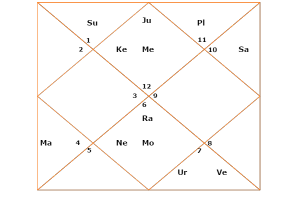
Shashtiamsa Chart
This chart helps to know about previous life and birth.
Given the example chart, the person could be religiously inclined in past lives as well as Jupiter is exalted in Lagan.
Due to aspect of Saturn on ascendant- he may have tendency towards being a sadhu or an ascetic as well.
Now looking at the Shashtiamsa chart of his- the ascendant is Pisces, the 12th sign & 12th sign or house rules spirituality!
So one thing is confirmed that this person was of strong spiritual inclinations in the past life as well. Jupiter the planet of dharma and lord of the shashtiamsa is also in 12th sign/ ascendant.
So he could be highly into spiritual life in past life as well.
Rahu aspects Jupiter, so that means he might not been able to follow the path very well and rahu being in 7th with moon suggests. He could have been anger prone and interested in opposite sex in past life as well.
In lagan chart also Jupiter has an aspect from rahu.
All the above interpretations are confirmed by nadi jyotish as well, so the chart is accurate.

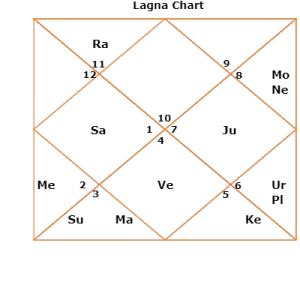
Rahu Gandhi past life karma and shashtiamsa d60 chart or horoscope(kundali):
planets C R Rashi Longitude Nakshatra Pada Relation
• Asc Capricorn 12 41 43 Sravana 1
• Sun D Gemini 03 34 11 Mrigasira 4 Neutral
• Moon D Scorpion 22 15 53 Jyeshtha 2 debilitated Mars C D Gemini 17 20 44 Ardra 4 Enemy
• Merc D Taurus 14 26 27 Rohini 2 Friendly
• Jupt R Libra 02 40 52 Chitra 3 Enemy
• Venus D Cancer 08 51 08 Pashyami 2 Enemy
• Saturn D Aries 24 25 55 Bharani 4 Debilitated
• Rahu R Aquarius 12 54 22 Satabhisa 2
• Ketu R Leo 12 54 22 Magha 4
what does Rahul Gandhi d1 or lagna horoscope ninth bhava of past life karma analysis first says?
Rahul Gandhi has mercury or budha the lord for the ninth bhava or house it is sitting on Venus and in the fifth bhava getting very good energy from the past life again as fifth bhava also connects to good punya of past life.
This makes him or Rahul Gandhi very blessed and yes he is born in an illustrious family we know the Gandhi family.
Mercury the past life karma lord is strong on Venus as the dispositor giving him full opulence and a creative mind and relatively quick mind to think about matters.
Budha or mercury means one may be born in tirtha sthala(holy place) or places like Dwarka , Rameswaram, Mathura etc in the past life if born in India.
as he or Rahul Gandhi is born in Kanya rashi or Virgo he could be born in these countries in the past life.
It could be India, Turkey, Iran, Assyria, also West Indies, and yes Jerusalem . some possibility of it being Los angles. fine tuning or making it more accurate could be done by using other chart later
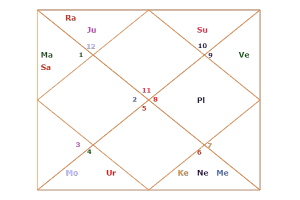
What does the d60 or shashtiamsa chart of Rahul Gandhi say about his past life karma?
Mercury is 14.26 degrees in Taurus sign or vrishabha rashi. this is an even sign and that means it is the 14x 2+1 division of the shashtiamsa or d60.
That is the 29th division.
It means one is born in the kaal division and one may be involved as an artist or a poet or poetry or something to do with artistic things or kitchen/restaurants(like his respected mother Sonia Gandhi ji) related matters as well.
Also it could be maintaining discipline and time(note he is Capricorn lagna).

What does The shastiamsa or d60 analysis of sri Rahul Gandhi’s horoscope(kundali) say?
The ascendant for sri Rahul Gandhi ji is 12:41 Shravana. so now Capricorn or makar rashi is an even sign and 12:41 means 12:30+ 11′ = 12×2 +1 +1 = 24+2 = 26th d60 or shahstiamsa division he was born in.
This division is ruled by Yama the GOD of death. There could be moral duties and responsibilities that Rahul Gandhi ji has for the nation we all know.
yes he has a hard destiny to maintain the congress party and clearly signified by the d60 of the Yama for him.
now let us look at what does the nakshatra star say for him or Rahul Gandhi ji that is Shravana.
Shravana gives him the basic scholarly by nature(that is a non-materialistic type) and would do religious work. He also has a good character and be well known.
Rahul Gandhi may live away from birth place
he also would have a charitable and a kind nature.
Now let us look at more specific characteristics of Rahul Gandhi ji with sub nakshatras or stars and connect this d60 or shastiamsa and yes Shravana nakshatra for him.
he is born in the first pada, that is corresponding to Aries navamsha so giving him good logic and initiative to do work and also makes him or Rahul Gandhi career conscious or focused on his goals of career.
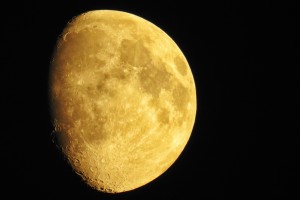
Let is check some more by the placement of moon or mind for sri Rahul Gandhi ji ?
The planet moon is in 22:15 Scorpio. is equal to 22x 2 +1 = 45 and Scorpio is an even sign.
now this d60 division or shahstiamsa is abhibag sarp so this is a part of profession to do with entertaining people ye a politician is one of the greatest entertainers of people.
The person would entertain people and public and yes greenery would be loved by the person.
Now let us check this with nakshatra and see the whole story.
Jyeshtha nakshatra makes him Honored, intent on their dharma.
he or Rahul Gandhi would have good writing skill smooth and respected.
Rahul Gandhi may also have many friends and be well like.
Rahul Gandhi just like his great grandfather pundit Jawaharlal lal Nehru may have love for children and be well liked.
what is the Narendra modi ji d60 chart & past life interpretations?

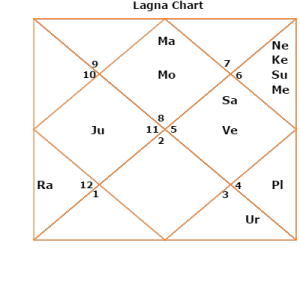
Is there an indication of Narendra modi Ji’s action ability in his d60 or shashtiamsa chart?
what does narendra modi ji’s lagna(ascendant) say based on his d60 or shashtiamsa horoscope?
the lagna(ascendant) of narendra modi ji is 1:09 degrees in Scorpio and is Vishakha nakshatra.
this means he is in the 3rd division of d60 chart as each division of shashtiamsa chart is in the 0.5 degree. so he or narendra modi ji’s lagna(ascendant) is in the Scorpio sign at 0.5+0.5 +.09, so it is the 3rd division for him.
Now this division of the d60 is payodhi or ocean of milk, heads of institutions. This clearly suggests that he had opulence in his past life and was a leader of various institutions in his previous incarnation as well.
One carries the seed tendencies of past life to this life time for sure.
Saturn or Shani the lord of d60 with rahu, makes him hardworking and non-conventional plus a person who would work for the society for sure.
Also first house lord in the seventh bhava makes him a wanderer in the earlier part of this life. One may refer brihat Parashar hora shastra for the effects.

what does his Chandra or moon lagna or ascendant say based on narendra modi ji’s d60th horoscope or kundali?
The moon or Chandra of narendra modi ji is also at 8:48 degrees ins Scorpio or Vrishchika rashi. This makes it 8×2=16 + 0.30(1) +0.18(1) = 18(16+1+1=18th) division of the d60 division of the Scorpio sign.
now this division is of utpata or unexpected sudden events , this gives unusual events in life( he is the prime minister of India from a tea seller),and also suggests higher knowledge in Vedas and vedanga.
this is 100% true for narendra modi ji he had stayed in Himalayas in his Youth we all know.
Moon is the lord of seventh house of relationships and is in the house of public image in the fourth bhava. so the mind helps to connect to large set of people and Saturn properties of characteristics matters for narendra modi ji’s success in public life.
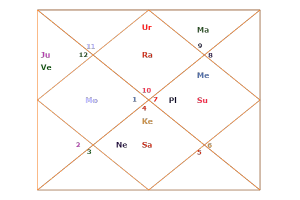
what does narendra modi ji’s action part say based on the 10th lord placement?
In narendra modi ji’s chart sun the lord of leadership is in the sign of Virgo in the 11th bhava or house of his d1 chart.
It is at 0.35 degrees so say the first division of Virgo sign or Kanya rashi. This deals with traders, people who deal with sea products, trader of pearls and owner of gardens.
Now this is the kind of action he would be doing along with what has been discussed above. he might have been closer to nature and yes closer to sea.
In his d60 chart or horoscope sun is weal in Libra but in Kendra and is blessed by strong and good past life karma energy of the ninth bhava or house for him.
This gives him poise and wisdom in actions and though sun could put him in tight spots at times.

Salman Khan Planetary Longitudes
Sun D Sagittarius 12-02-15 Mula 4 Friendly
Moon D Aquarius 01-32-29 Dhanishta 3 Neutral
Mars D Capricorn 09-52-22 Uttarashadha 4 Exalted
Merc D Scorpion 21-00-15 Jyeshtha 2 Neutral
Jupt R Gemini 01-36-46 Mrigasira 3 Enemy
Venus D Capricorn 18-47-07 Sravana 3 Friendly
Saturn D Aquarius 18-41-30 Satabhisa 4 Own
Salman khan what does his d60 past life chart say about him?
What does Salman khan’s lagna d60 or shashtiamsa chart (horoscope) say about his past life?
The lord of the d1 or lagna chart (horoscope) for Salman khan is Aries ruled by mars. That gives him action and good muscled body.
also his lagna is at 22 degrees 48 minutes and 28 seconds, this means it is in the 22×2 + 1+ 1 division of the shashtiamsa chart. 30 minutes or .5 degrees is one division in the d60 horoscope. So it is in the 46th division of Aries or mesha rashi for Salman khan.
So the 46th division of Aries (mesha rashi) is KOMAL or delicate, yes he looks cool and sensitive despite his muscular body. It also represents top government officials and yes and senior officials or bureaucrats.
But we feel that Salman khan’s birth time may not be accurate enough may be by 1 2 minutes or so and need birth time rectification.
as SOUMYA the 45th division is much better first for Salman khan’s Soumya means gentle, sober, great warrior type qualities, gives good ranks in police or armed forces includes military as well.
So SOUMYA d60 or shashtiamsa division of varga charts fits better for Salman khan as he is a mix of gentle mind and also a strong warrior’s body and attitude at times.

D60 or shashtiamsa chart Salman Khan
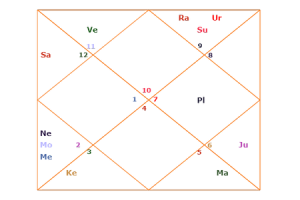
what does Salman khan’s moon d60 say about his previous incarnation?
His moon is in Aquarius sign which makes him picky as well about things and yes philosophical to an extent in life,.
The moon longitude is 1 degree 32 minutes and 29 seconds. But we feel it should be around 1 degree to 1 degree 30 minutes as we discussed earlier his birth time needs a small rectification and verification.
This gives him 1×2 +1= 3 rd division of the zodiac sign of Aquarius or kumbha rashi. Now this is DEVA d60 or shashtiamsa division it says one who is giving in nature so is Salman khan like that he gives a lot of charity.
This he carries from his past life karma and sanskars. We need to know that his respected mother is a Hindu and father a gentlemanly person.
His ninth bhava or house lord is also Jupiter or guru that clearly suggest gains from father and high chance he was born In India in his previous incarnation.
Also DEVA means who gives knowledge or Gyan and also a person who should be loved, Yes Salman khan is philosophical and gives Gyan as well to people.

what does the d60 chart of Salman khan say in general about this?
Now in the d60 or shashtiamsa chart mars are lord of his 4th(fourth) bhava or house of image and family and also the lord of eleventh bhava of gains and money and is strong in the eighth bhava.
yes this hints impact to his image due to court cases etc due to eighth house or bhava ruling the image and family.
the eleventh lord in eighth may give him conflicts with his friends and lovers. he has left many of his previous lovers or people whom he loved may be one sided like Aishwarya rai Bachchan , Katrina kaif etc .
Saturn or Shani the dispositor of moon is in third bhava or house giving him impetus for actions to help the poor and down trodden.
the lagan or ascendant lord of d60 chart is Capricorn and also we feel it could be Sagittarius or dhanu ruled by Jupiter or guru, for him if the birth time is adjusted.
Sagittarius or dhanu clearly explains his handsome looks and yes good actions and benevolence and name in the films and society.
The lord of initiatives in case dhanu lagan or Sagittarius rises in the d60 or shashtiamsa means his third house has Venus, the planet of beauty and luxury and yes ruling films and Bollywood. which is all true?
so instead of taking Capricorn or makar rashi as his lagna, one should take Sagittarius or dhanu rashi as Salman khan’s lagna.

Is there any past life or d60(shashtiamsa connection) of US president Donald Trump? Let us look at the same…
Birth details of American(USA) president Donald trump
Name: Donald Trump
Date of Birth: Friday, June 14, 1946
Time of Birth: 10:54:00
Place of Birth: Jamaica
Longitude: 73 W 48
Latitude: 40 N 41
Time Zone: 0
what does the lagna and d60(shashtiamsa chart) of Donald trump say about possible past life of Donald trump?
The lagan or ascendant of Donald trump is 6:51:21 Leo that is 6 degrees and 51 minutes plus 21 seconds Leo
Now based on his d60 or shashtiamsa chart Leo is an odd sign and the above degrees means 6×2 + 1 +1 sixtieth division the lagna or ascendant is .That’s 12 +1+1= 14th division.
This 60th d60 division for Donald trump is DEVA GANESH the God of wind. The destroyer of the evil as sri Ganesh ji does. It is also the head of a village and also stands for revenue collectors.
Now note he is born in the Gemini sign by western astrology in the month of June and Gemini is Vayu tatwa air/wind and also he is 14th born .
1+4= mercury again is Vayu or wind, so a clear match is found here that in this life time also wind rules over him. that is the reason the GOD of wind is the shashtiamsa division that is coming in.
Also note he is the destroyer of evil he said that he would destroy terrorism and he has gotten Kim Jong un of North Korea on the knees on talking table in Singapore.
There is a great deal of de nuclearization also happening in north Korea .He or Donald trump is a no non sense person for that matter.
It says he or Donald trump would be the head of a village so that means a town mayor may be, so he had these leadership qualities in the past life as well.
It further says Donald trump was a tax collector that is revenue collector he has been into business and very good in getting money out of situations. he has got into debt but easily come out of his ability to attract and get money.

what does the moon chart of Donald trump and d60 say about his past life and reincarnation?
now his moon is in Scorpio 28:06:00, now Scorpio or Vrishchika rashi moon gives him the anger and courage to destroy evil. also it is an even sign.
the division of shashtiamsa it is in is 28×2 + 1 = 56+1= 57. as he is on the cusp of it let us check which is a better fit 56th or 57th shashtiamsa division?
Now 56th division of d60 finds a better fit and this is the KUBERA division or lord of wealth. we all know Donald trump is very rich person.
It further says its stands for strategic manipulators, traders , people who can handle others and yes diplomat.
YES Donald trump is a diplomat for sure to may be a lesser extend due to moon in Scorpio .
so his may be haste could cause issues = but over all he has to be one else he could not reach this stage. He has also been a trader and is very rich all is true for him or Donald trump.

what does the d60 chart as such say about Donald trump and his past life karma?
his lagna is simha or Leo and the lord sun is sitting in the eighth bhava or house, so he is brave like a lion and is bound to deal with terror and adversities of the eighth house.
his lagan in d60 or shashtiamsa is mercury ,an again his birth month of June and 14th comes into play. Plus this mercury is by Virgo sign or Kanya rashi in Sanskrit good for business with Jupiter sitting there so blessing business with grace of GOD.
plus the lord of lagan in d60 or shashtiamsa sitting in the fifth bhava or house makes him fun loving we know he loves fun and frolic and was in a great mood in the election campaign he had .
Venus the lord of affluence or the ninth bhava or house of Donald trump the president of America in the fourth bhava is a great augury for wealth and status in past life and with rahu suggest wealth could be accumulated with all kinds of means includes casinos etc.
So we see that over all Donald trump’s chart (horoscope) fits very well in the d60 or shashtiamsa framework or model of Vedic astrology. This is the glory of Vedic astrology we know.




































